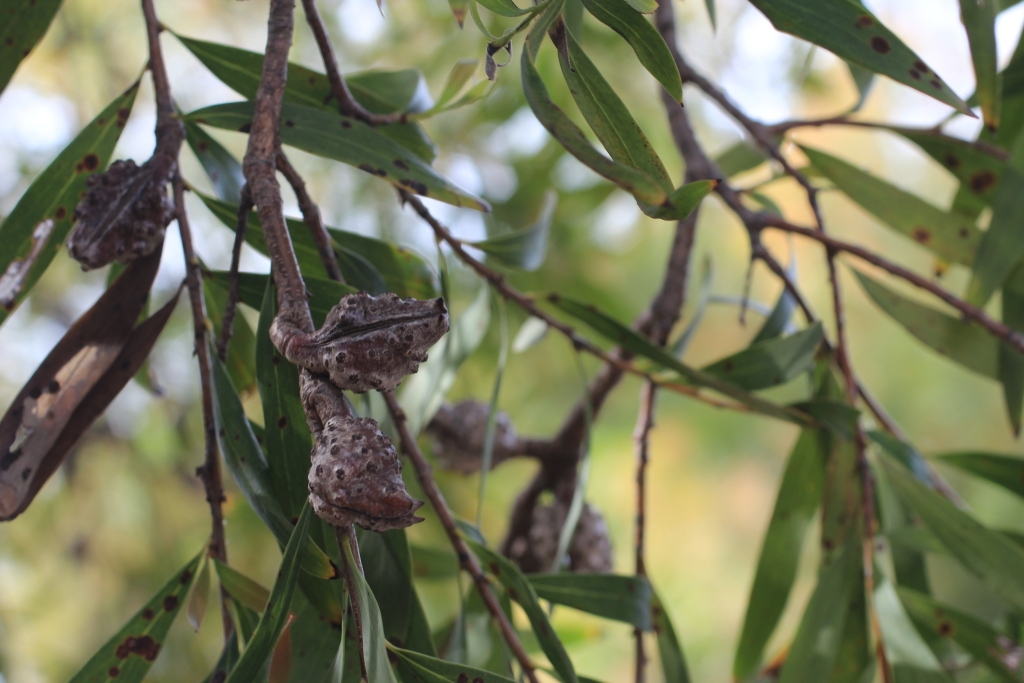Hakea salicifolia subsp. salicifolia
Willow-leaved HakeaShrub or small tree, 2–5 m high; branchlets sparsely silky pubescent or glabrous. Leaves flat, narrow-elliptic to lanceolate, 5–15 cm long, 5–20(–27) mm wide, apex usually acute; venation obscure; lateral veins at acute angles. Inflorescence 16–28-flowered; rachis 1–1.5 mm long; pedicels 4.5–7 mm long, glabrous; perianth 2–4.5 mm long, white, glabrous; pistil 6–6.5 mm long; pollen presenter an oblique disc. Fruit obliquely ovate to ± globose, c. 2–3.5 cm long, 1–3 cm wide, black-warted; horns often obscure; seed not occupying whole valve face, 1.7–2 cm long; wing only partly down one side of seed body. Flowers Aug.–Nov.
GleP, VVP, GipP, OtP, WaP, Gold, CVU, EGL, HSF, HNF, OtR, Strz. Also SA (naturalised), Qld, NSW (native and naturalised), ACT (doubtfully naturalised). Native to coastal areas and nearby ranges in New South Wales and southern Queensland, plants occasionally escaping cultivation in Victoria.
 Spinning
Spinning


